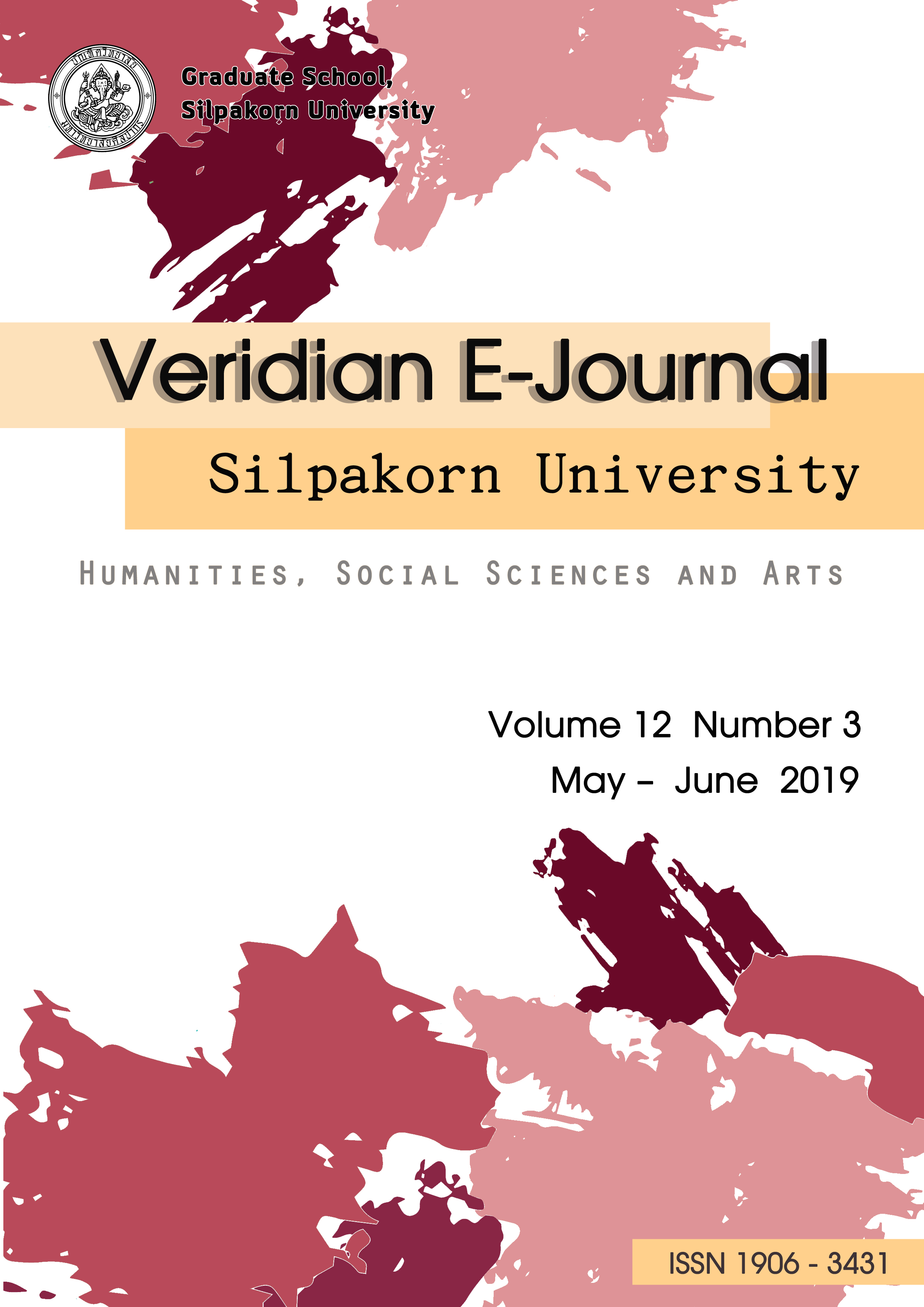Architectural Paper Model with Understanding of the Congenitally Blind Students:A Case Study of Phra Prang Sam Yod
Main Article Content
บทคัดย่อ
นักเรียนตาบอดสนิทตั้งแต่กำเนิดไม่เคยมีประสบการณ์ในการมองเห็นงานสถาปัตยกรรมมาก่อน แต่พวกเขาสามารถเรียนรู้และเข้าใจสิ่งแวดล้อมได้จากการเรียนรู้ในโรงเรียน พวกเขาสามารถใช้สอยและเดินทางไปยังส่วนต่างๆ ของอาคารโดยใช้การรับรู้เชิงแผนที่ 2 มิติ ประกอบกับทักษะของวิชาความคุ้นเคยกับสภาพแวดล้อมและการเคลื่อนไหว (Orientation and Mobility : O&M) เป็นหลักวิชาในการสร้างทักษะโดยการฝึกฝนการสร้างความคุ้นเคยกับสภาพแวดล้อมของคนตาบอด แต่การรับรู้ในมิติของรูปทรงขนาดใหญ่นั้นมีความจำเป็นที่จะต้องใช้สื่อการสอนแบบหุ่นจำลองช่วยในการเรียนรู้และรับรู้ การศึกษานี้ได้จากการทดลองใช้สื่อการเรียนรู้วิชาทัศนศิลป์สำหรับนักเรียนตาบอดด้วยหุ่นจำลองงานสถาปัตยกรรมแบบกระดาษพับ โดยใช้เทคนิคการขึ้นรูปทรง 3 มิติ และคลี่แบบด้วยโปรแกรมคอมพิวเตอร์ จากนั้นจึงพิมพ์ลงกระดาษหนาแล้วพับขึ้นรูปโดยใช้กาวหรือเทปใสปะติด วิธีทำสื่อการสอนแบบนี้เพื่อให้ผลิตและซ่อมแซมได้ง่าย สามารถแบ่งปันและส่งต่อไปยังโรงเรียนต่างๆ ที่มีนักเรียนตาบอดเรียนรวม
กลุ่มตัวอย่างซึ่งเป็นนักเรียนตาบอดจากโรงเรียนการศึกษาคนตาบอดขอนแก่นที่ได้เรียนรวมในโรงเรียนทั่วไป สามารถสัมผัสและรับรู้รูปทรงของหุ่นจำลอง “พระปรางค์สามยอด” ได้ โดยจะต้องมีครูช่วยบรรยายลักษณะของหุ่นจำลองทีละส่วนอย่างค่อยเป็นค่อยไปตั้งแต่ทางเข้า ทางเดิน ช่องเปิด ผนังจนไปถึงยอดหลังคา และอธิบายภาพรวมของรูปทรง กลุ่มตัวอย่างสามารถเข้าใจเกี่ยวกับการเทียบสัดส่วน การออกแบบลักษณะเฉพาะของงานสถาปัตยกรรม เช่น ส่วนยอด ส่วนเรือนธาตุ ส่วนฐาน การเน้นหน้ามุกหรือประตูทางเข้าไปยังปราสาทประธาน ระดับทางเดิน ทางเดินเชื่อมต่อปราสาททั้ง 3 องค์ หลังคามุขกระสัน การย่อมุม ส่วนตกแต่ง จนไปถึงส่วนของยอดปราสาททั้งสามที่เรียงกัน เป็นต้น ซึ่งช่วยให้คนตาบอดเข้าใจรูปทรงและเข้าถึงลักษณะของงานสถาปัตยกรรมได้เป็นอย่างดี สร้างโอกาสและความเสมอภาคทางการเรียนรู้
Article Details

อนุญาตภายใต้เงื่อนไข Creative Commons Attribution-NonCommercial-NoDerivatives 4.0 International License.

